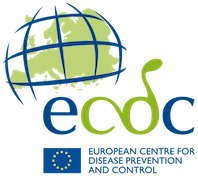Response plan to control and manage the threat of multidrug-resistant gonorrhoea in Europe
This response plan is designed to prevent the spread of multidrug-resistant Neisseria gonorrhoeae (MDR NG) in the EU/EEA in the context of the possible emergence of untreatable gonorrhoea. Components of the plan include the monitoring of treatment failure, the establishment of a communication strategy, and the strengthening of surveillance.
Executive Summary
Gonorrhoea is the second most commonly reported bacterial STI in Europe and is a serious public health problem as untreated infections may lead to severe secondary sequelae, including pelvic inflammatory disease, first trimester abortions, ectopic pregnancy, and infertility. Successful treatment of cases reduces the risk of complications, but also serves as the main public health strategy for reducing transmission.
N. gonorrhoeae has developed resistance to several antimicrobial drugs over the years. Current treatment guidelines in most European countries recommend the use of single-dose injectable (ceftriaxone) or oral third-generation cephalosporins (cefixime). Over the last few months there have been increasing reports, first from Japan, then in Europe, of treatment failures to the currently recommended treatments. Unfortunately there are no obvious choices for new treatments once resistance to third-generation cephalosporins is widespread. This makes surveillance of antimicrobial susceptibilities across Europe essential in order to enable national authorities to develop appropriate treatment guidelines for gonorrhoea.
European Gonococcal Antimicrobial Surveillance Programme
The European Gonococcal Antimicrobial Surveillance Programme (Euro-GASP) has been set up to inform public health and treatment guidelines by reporting on trends in gonococcal antimicrobial resistance across Europe. These data are crucial for optimisation of treatment and to detect emerging resistance. Euro-GASP is implemented as a sentinel surveillance system through the European STI expert network and involves a network of laboratories in Member States. Euro-GASP includes AMR testing twice a year, an external quality assessment programme, and training for laboratory staff.
The most worrying result from this programme has been the increase in the percentage of isolates with reduced susceptibility to cefixime and the increase in the number of countries where this phenotype was identified between 2009 and 2010. Euro-GASP has also detected increases from 2009 onwards in the higher MIC categories for ceftriaxone.
The lack of alternative therapies, decreasing susceptibility to the cephalosporins, and numbers of treatment failures across Europe show that the gonococcal population needs to be monitored carefully, and a European public health response plan is necessary, as the loss of both cefixime and ceftriaxone as treatment options for gonorrhoea would have a significant impact on public health.
Objectives of the response plan
This response plan is designed to contribute to preventing the spread of multidrug-resistant Neisseria gonorrhoeae (MDR NG) in the EU/EEA in the context of the possible emergence of untreatable gonorrhoea. MDR NG is defined as by Tapsall et al. The plan details the response at European level and is designed as a guide for Member States when planning national interventions.The main goal of the public health response plan is to minimise the impact of MDR NG on the prevention and control of gonorrhoea in Europe.
Specific objectives include
Strengthening the surveillance of gonococcal antimicrobial susceptibility in the EU/EEA Member States to inform national treatment guidelines;
Ensuring that a minimum capacity for culture and susceptibility testing in EU/EEA Member States is either available or developed;
Establishing a strategy to rapidly detect patients diagnosed with gonorrhoea who experience a clinical treatment failure following treatment with recommended cephalosporins, including the clinical management of affected patients and their sexual partners;
Outlining a set of recommended public health actions to be implemented at the national level, following the detection of MDR NG cases;
Increasing the awareness of policy makers, clinicians, patients, and key populations.
Clinical management and treatment failure
Clinical management
Clinicians who identify patients with suspected cephalosporin treatment failure need to request culture and susceptibility testing of relevant clinical specimens and report the case to local public health authorities. Close collaboration between the clinicians, laboratories and local public health authorities is essential in order to ensure that cases with probable or confirmed treatment failure are appropriately investigated and treated. Close coordination is also necessary to ensure that partners are being notified, investigated and treated appropriately.
Clinicians noticing clusters of treatment failures should also be encouraged to report to local public health authorities so that appropriate investigations and interventions can be undertaken. Local or regional health authorities should contact national authorities (particularly the STI departments managed by formal STI focal points) who can then share data on such cases at the European level.
In order to collect accurate and comparable data, we suggest case definitions for treatment failures. For keeping track of treatment failure in a country, a structured collection of clinical and epidemiological information is suggested and needs to be implemented at country level.
European clinical management guidelines are currently under revision by IUSTI.
Actions:
ECDC and IUSTI to review guidance on the management of gonorrhoea treatment failures and recommendations for a test of cure
Indicators:
Gonorrhoea patient management guidelines reviewed and revised
Number of countries recommending culture and antimicrobial susceptibility testing for cases of suspected treatment failure
Case definitions for antibiotic treatment failure
Cases of suspected treatment failure are of considerable importance. The review and verification of such an event and subsequent initiation of adequate public health responses requires close collaboration between clinicians, laboratory staff and public health authorities.
A combination of appropriate clinical observations and laboratory examinations are required to verify treatment failures with recommended cephalosporin treatment regimens.
Working case definition for confirmed treatment failure: clinical and laboratory criteria
A gonorrhoea patient who returns for test of cure or who has persistent genital symptoms after having received treatment for laboratory-confirmed gonorrhoea with a recommended cephalosporin regimen (ceftriaxone or cefixime in appropriate dose)
AND
remains positive for one of the following tests for N. gonorrhoeae:
- presence of intracellular Gram-negative diplococci on microscopy taken at least 72 hours after completion of treatment;ORisolation of N. gonorrhoeae by culture taken at least 72 hours after completion of treatment; ORpositive nucleic acid amplification test (NAAT) taken two to three weeks after completion of treatmentANDdenies sexual contact during the post-treatment follow-up period ANDdecreased susceptibility to cephalosporin used for treatment*:- cefixime: MIC>0.12 mg/L**- ceftriaxone: MIC>0.12 mg/L**
* Ideally, the pre- and post-treatment isolates should be examined with an appropriate and highly discriminatory molecular epidemiological typing method (to confirm an identical strain) and with genetic methods (to confirm the resistance determinants in order to show that the strain is truly resistant).** These thresholds are in accordance with EUCAST tentative breakpoints.
Working case definition for probable treatment failure: clinical and laboratory criteria
A gonorrhoea patient who returns for test of cure or who has persistent genital symptoms after having received treatment for laboratory-confirmed gonorrhoea with a recommended cephalosporin regimen (ceftriaxone or cefixime in appropriate dose) ANDremains positive for one of the following tests for N. gonorrhoeae:
- presence of intracellular Gram-negative diplococci on microscopy taken at least 72 hours after completion of treatment; ORisolation of N. gonorrhoeae by culture taken at least 72 hours after completion of treatment; ORpositive nucleic acid amplification test (NAAT) taken two to three weeks after completion of treatmentANDdenies sexual contact during the post-treatment follow-up period.
Actions
Ensuring national agreement of the above case definitions
Dissemination of the case definitions to all EU/EEA Member States
Encouraging the dissemination of the case definitions at the national level
Indicator
Number of countries adopting the case definitions for gonorrhoea treatment failure
Mechanisms for reporting of treatment failures
Standardised clinical and epidemiological data of treatment failures should be collected and reported in a timely manner at the national level. Although Euro-GASP provides an overview of antimicrobial-resistant gonococci in the EU, there is a need for developing a reporting mechanism that functions as an (inter)national reporting system for treatment failures, with the possibility to distinguish between probable and confirmed cases.
The reporting of treatment failures within the European STI expert network will contribute to a better understanding of the spread of MDR NG across Europe and will facilitate the European response, particularly at a time of pressure on public health services. Furthermore, it will provide more accurate data to establish clinical breakpoints.
Cases of probable and confirmed treatment failure should be reported through the Epidemiological Intelligence Information System for STI (EPIS-STI), an online application which allows the secure exchange of information and data between the members of the European STI expert network (see template for reporting).
Actions:
Agreement with experts on the reporting template for probable and confirmed treatment failures
Further developing EPIS-STI in order to facilitate the reporting of cases of treatment failure
Indicators:
Number of countries implementing treatment failure monitoring
Number/proportion of cases of treatment failure reported in EPIS-STI (and in publications)
Number/proportion of treatment failures reported in EPIS-STI using the agreed reporting template
Strengthening antimicrobial surveillance
Expanding Euro-GASP
In 2011, 21 out of 30 EU/EEA countries participated in Euro-GASP. The reasons for non-participation are primarily the lack of available cultures to refer to Euro-GASP (due to the use of NAATs), the differences in diagnostic procedures in STI clinics, and the lack of resources for performing culture. Participation from central and eastern EU/EEA countries should be improved, as very limited information is available on the AMR profile in these countries.
In some countries, antimicrobial drugs seem to be easily available without prescription and the use of suboptimal medication as a second-line treatment seems to be common. These factors increase the risk of emergence of MDR NG. Expanding Euro-GASP to more countries is therefore important to further control emergence and spread of MDR NG strains in Europe.
Actions
Inclusion of two additional Member States in Euro-GASP 2012
Ensuring that all Euro-GASP laboratories participate in the EQA programme
Ensuring further dissemination of Euro-GASP results though the members of the European STI network
Indicators
Number of countries participating in Euro-GASP
Number of isolates reported through Euro-GASP
Number of laboratories participating in the EQA programme
National microbial resistance
Euro-GASP provides important data at the European level but is dependent on national gonococcal surveillance systems or on specimen collection specifically designed for Euro-GASP participation. The increased use of NAAT (Nucleic acid amplification test) as the principal diagnostic method in many countries has made it difficult for many countries to obtain samples for culture and susceptibility testing.
Actions at the national level:
Promoting the establishment of a national platform for expert consultation across different disciplines involved in gonorrhoea control
Developing and implementing a national sentinel gonococcal antimicrobial susceptibility programme (GASP) which provides information on a limited number of gonococcal isolates against a panel of antimicrobials linked to the epidemiological characteristics of the patient
Ensuring specimen collection for GASP in a small network of laboratories (minimum requirement)
Supporting the implementation at the national level of transport media for gonococci which allow dual usage of NAAT and subsequent culture and antimicrobial susceptibility testing
Indicators:
National (sentinel) GASP in place
Proportion of all STI clinics (sentinel sites) that have access to culture and antimicrobial susceptibility testing
Proportion of all (reported) gonorrhoea cases tested with culture and with antimicrobial susceptibility results available
Training
ECDC continues to offer STI laboratory training modules for STI laboratory staff in EU/EEA Member States in order to enhance the capacity to perform culture and antimicrobial susceptibility services. Training on sampling and treatment failure should be provided for healthcare providers at national level.
Actions:
Providing ECDC laboratory training modules to a number of Member States
Countries offering training for laboratories and/or clinicians at the national level
Indicators:
Number of countries participating (or have participated) in the ECDC laboratory training modules
Number of countries offering national training modules (laboratory and/or clinical)
Improving data completeness and timeliness
Reporting of epidemiological variables, including specimen site, sex, age, sexual orientation, previous infections and concurrent STI diagnosed is important to understand the spread of infection. The completeness of this data in Euro-GASP 2009 and 2010 (annual reports) is low and the number of Member States reporting these variables needs to be increased.
Timely reporting of AMR and epidemiological data is essential in order to quickly identify emerging trends. Laboratories and epidemiologists participating in Euro-GASP will be encouraged to upload their national AMR and epidemiological data in a timely manner. ECDC will provide support and training for uploading data to The European Surveillance System (TESSy).
Actions:
Improving the completeness of epidemiological characteristics at national level
Assessing the representativeness of Euro-GASP in 2012-2013
Ensuring that AMR and epidemiological data are reported in a timely manner to TESSy
Assessing the time required for Euro-GASP reports and recommending improvements
Indicators:
Proportion of countries reporting epidemiological characteristics in Euro-GASP
Indicators for improving representativeness developed following the first assessment
Completeness of Euro-GASP data with respect to key epidemiological characteristics
Time interval between Euro-GASP sample collection period and publication of Euro-GASP reports (interim and final)
Communication strategy
It is essential to increase the awareness of the threat connected to the emergence of cephalosporin-resistant N. gonorrhoeae in a number of groups:
Engaging politicians and policy makers in order to prioritise the issue and ensure that resources are available for culture and susceptibility testing.
Awareness among clinicians and other healthcare providers is needed in order to ensure optimal patient treatment and to enable the early identification of treatment failures. This can be achieved through direct communication with clinicians and microbiologists (see templates for a letter and fact sheets in Annexes 2 and 3) or through publications in national medical journals with a wide readership.
The importance of maintaining the capacity of culturing N. gonorrhoeae and conducting antimicrobial susceptibility testing needs to be emphasised to microbiologists and laboratory staff in order to ensure that AMR data will remain available.
People at increased risk for acquiring MDR NG (e.g. men who have sex with men, sex workers, and youths) need to be aware of the threat of resistant gonorrhoea. Prevention messages should be targeted at these groups. This can be achieved by distributing leaflets in dedicated clinical settings.
The timely dissemination of surveillance information to those who plan public health programmes and those who develop local, regional and national policies will ensure an optimal response to the threat of MDR NG.
A communication strategy can be developed at the national level and discussed within the multidisciplinary platform suggested above. It is important to engage clinicians, laboratories, professional societies and public health authorities in the development and agreement. As a minimum measure, a communication strategy should contain a plan for the dissemination of the most recent data on gonorrhoea and AMR patterns.
Actions:
Establish a communication strategy at national level
Producing a template for a letter to medical professionals and adjusting it to national standards
Producing a fact sheet on multidrug-resistant N. gonorrhoea (templates provided) for publication at national level
Encouraging and supporting Member States in writing publications on the threat of cephalosporin-resistant N. gonorrhoeae for national and international medical journal
Indicators:
Number of countries with a national communication strategy
Number of national and international publications/communications on MDR NG
Read more
Global action plan to control the spread and impact of antimicrobial resistance in Neisseria gonorrhoeae - WHO




